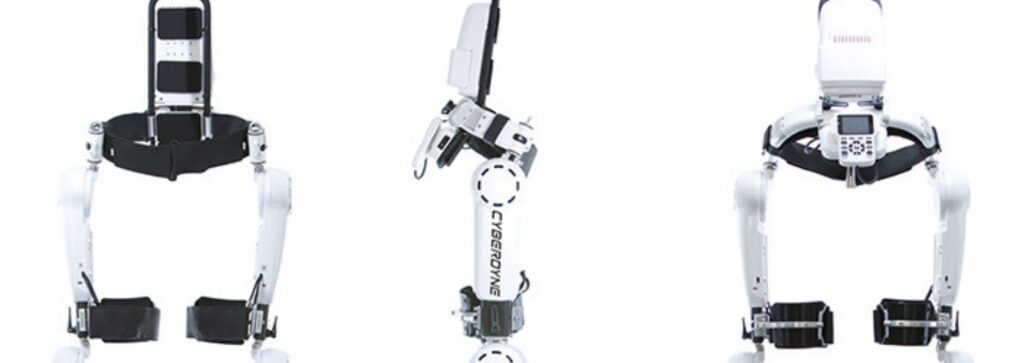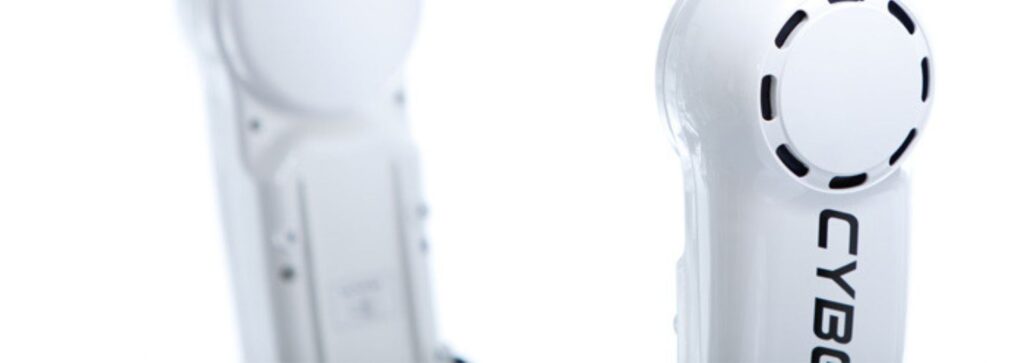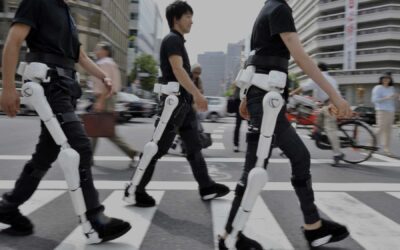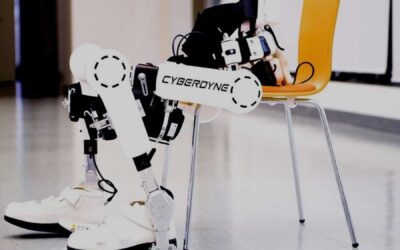Healthcare has reached new heights, with a lot of breakthroughs in technology. Cyberdyne is one such pioneer in the science of “Cybernics”, which is the fusion of humans, machines, and information.
Cyberdyne’s – Hybrid Assistive Limb (HAL) is a powered exoskeleton suit developed by Japan’s Tsukuba University and the robotics company Cyberdyne.
Application of – The Hybrid Assistive Limb’ [HAL]
HAL is a wearable robot suit that assists in voluntary control of the knee and hip joint motion. The HAL detects the bioelectric signals generated by patients’ muscle activities and/or force-pressure signals caused by patients’ weight shifts.
HAL controls the power unit according to the movements it recognises to assist the wearer in moving according to his or her intentions or even exerting more force than usual.
Cyberdyne Treatment Using HAL

Think
When we move our bodies, we begin by thinking about the movement.
By thinking, “I want to walk,” the brain sends the necessary signals through the nerves to the muscles needed for that movement.
Send
In the body of a healthy person, each muscle receives signals sent from the brain, allowing the muscles to move only the amount of force necessary to match the intention.
Read
Signals travelling towards the muscles, leak on the skin surface as very faint signals, so-called “bio-electric signals [BES]”. HAL reads the BES with its electrodes attached to the wearer‘s skin surface. Based on various other information obtained as well, HAL determines the wearer’s desired movements.
Move
HAL controls the power unit according to the movements it recognises to assist the wearer in moving according to their intentions.
HAL has two control systems that can be used together according to the conditions of the wearer. The “Cybernics Voluntary Control System” uses BES to perform the wearer‘s desired movements. The other is the “Cybernics Autonomous Control System” to realise human-like movements even if the BES cannot be detected. These two control methods are the reason why HAL is such an advanced technology.
Response
Once the movement is complete, the brain cheques how the body moved according to the signals sent. When HAL realises the wearer‘s intended motion, the body feeds back information of the successful movement. This allows the brain to gradually learn how to send out the signals necessary for good movements. Repeating this process could help a person with a disability improve their physical functions.
Recovery by Cyberdyne treatment

Cyberdyne treatment delivers revolutionary therapies and enhances the quality of life for all people in need. The purpose of rehabilitation robots in physical therapy – is to create an ideal future by developing and manufacturing innovative Cybernics systems, with a focus on improving medicine, welfare, and daily life.
Testimonials
Discover real storeys from real people about how Cyberdyne technology changed their lives forever.
Samantha says- “I feel more mobile than ever since Cyberdyne! Today is my last day walking with Cyberdyne HAL at Brooks Rehabilitation. I have made big clinical improvements compared to when I first started. Thanks for getting me more confident to be on my feet, with more physical strength and stamina. I have been impacted and blessed by this whole experience. Never stop trying to make your life better!” – HAL LOWER LIMB
So connect with us for more on the journey of Cyberdyne Treatment at https://rehabmodalities.com/



